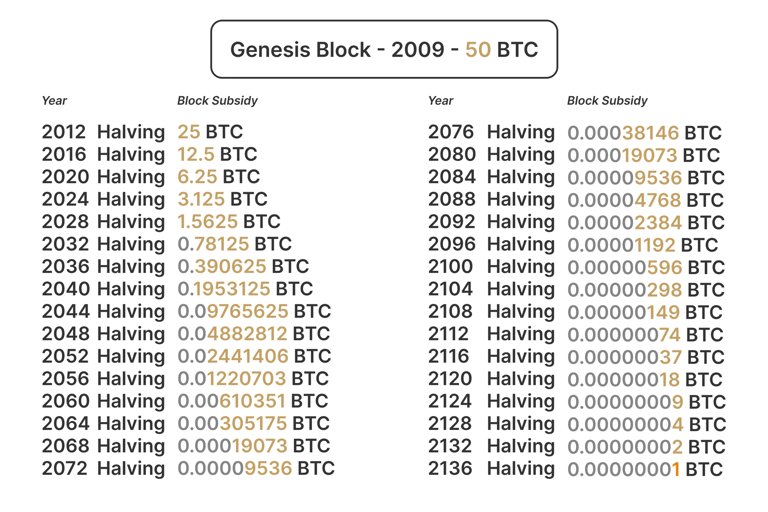The Birth of Bitcoin
Bitcoin was introduced to the world by an anonymous individual or group known as Satoshi Nakamoto. In October 2008, Nakamoto published the now-famous whitepaper titled Bitcoin: A Peer-to-Peer Electronic Cash System, which outlined a revolutionary digital currency system. The whitepaper proposed a decentralized network where users could transfer value directly to one another without the need for intermediaries like banks. This concept was a direct response to the 2008 financial crisis, which exposed vulnerabilities in traditional financial systems.
On January 3, 2009, Satoshi mined the first block of the Bitcoin blockchain, known as the Genesis Block. This block contained a message referencing the financial turmoil of the time: "The Times 03/Jan/2009 Chancellor on brink of second bailout for banks." This message is widely interpreted as a critique of centralized banking systems and a declaration of Bitcoin’s purpose as an alternative monetary system. The identity of Satoshi Nakamoto remains a mystery to this day, further adding to Bitcoin's intrigue.
The Early Days of Bitcoin
In the beginning, Bitcoin was a niche project primarily known among cryptographers and tech enthusiasts. Transactions were conducted among a small group of early adopters who believed in the potential of a decentralized currency. The first known Bitcoin transaction occurred in January 2009 when Satoshi Nakamoto sent Bitcoin to Hal Finney, a prominent cryptographer and one of Bitcoin’s earliest supporters.
One of the most famous moments in Bitcoin’s early history is Bitcoin Pizza Day, celebrated annually on May 22. In 2010, Laszlo Hanyecz made the first documented commercial purchase using Bitcoin when he paid 10,000 BTC for two pizzas. At the time, Bitcoin had little monetary value, but this transaction is now seen as a pivotal milestone, demonstrating its use as a medium of exchange. Bitcoin’s first exchange, BitcoinMarket.com, was launched in 2010, enabling users to trade Bitcoin for traditional currency. By 2011, Bitcoin reached a value of $1 per coin, marking its emergence as a digital asset.
Major News and Milestones
Bitcoin’s history is dotted with events that brought it to the public’s attention. In 2013, the Silk Road, an online marketplace that used Bitcoin for transactions, was shut down by the FBI. This event highlighted Bitcoin’s use in illegal activities but also demonstrated its viability as a currency. In 2017, Bitcoin experienced a meteoric rise in value, reaching nearly $20,000 per coin by the end of the year. This bull run introduced millions of new users to Bitcoin and cryptocurrencies in general.
In 2021, Bitcoin reached a new milestone when companies like Tesla and MicroStrategy announced that they had added Bitcoin to their balance sheets. This institutional adoption drove the price to a then-record high of $64,000 in April 2021. However, the cryptocurrency’s volatility was also evident during the market downturn of 2022, when the collapse of major platforms like FTX led to significant price declines. These events illustrate Bitcoin’s dual role as both an asset of great potential and a highly speculative investment.
Bitcoin Mining and Halving Events
Bitcoin’s network is secured by miners, who validate transactions and add them to the blockchain in exchange for rewards. When Bitcoin was first launched, the reward for mining a block was 50 BTC. This reward is reduced by half approximately every four years, in an event known as a halving. The halving schedule is integral to Bitcoin’s design, ensuring that the supply of new Bitcoin decreases over time, ultimately capping the total supply at 21 million coins.
The first halving occurred in 2012, reducing the block reward to 25 BTC. Subsequent halvings in 2016 and 2020 further reduced the reward to 12.5 BTC and then 6.25 BTC. The recent halving, in 2024, reduced the reward to 3.125 BTC. These halvings are significant events in the Bitcoin ecosystem, often leading to increased scarcity and price appreciation as the supply of newly minted Bitcoin dwindles.
Bitcoin’s Popularity and Adoption
Bitcoin has transitioned from a niche technology to a globally recognized asset. In 2021, El Salvador became the first country to adopt Bitcoin as legal tender, signaling a new era of mainstream acceptance. Major payment platforms such as PayPal and Square now allow users to buy, sell, and use Bitcoin, further integrating it into everyday financial systems. Bitcoin is increasingly seen as a hedge against inflation, with many likening it to digital gold due to its capped supply and decentralized nature.
Institutional interest in Bitcoin has also grown significantly. Investment firms, hedge funds, and even traditional financial institutions have started to allocate portions of their portfolios to Bitcoin. This mainstream adoption has contributed to its growing legitimacy as both a store of value and a potential global currency.
Technology and Security
At its core, Bitcoin is powered by blockchain technology, a decentralized ledger that records all transactions in a transparent and tamper-proof manner. The network uses a consensus mechanism called Proof of Work, which relies on miners to solve complex mathematical problems to validate transactions. This process, though energy-intensive, ensures the security and integrity of the Bitcoin blockchain.
Decentralization is a fundamental aspect of Bitcoin’s security. Thousands of nodes across the globe maintain copies of the blockchain, making it nearly impossible for any single entity to alter or control the network. This decentralized structure is key to Bitcoin’s resilience and trustworthiness.
Challenges and Criticisms
Bitcoin has faced significant criticism over the years, with one of the most prominent concerns being its environmental impact. The Proof of Work mechanism requires substantial computational power, leading to high energy consumption. Efforts are underway to address this issue, including the use of renewable energy in mining operations. Bitcoin also faces scalability challenges, as the network can process only about seven transactions per second, which is significantly lower than traditional payment systems like Visa.
Regulation is another area of concern. Governments around the world are grappling with how to classify and regulate Bitcoin, with approaches ranging from outright bans to supportive frameworks. These regulatory uncertainties continue to influence Bitcoin’s adoption and market dynamics.
Cultural and Global Impact
Bitcoin has transcended its role as a digital currency to become a cultural phenomenon. It represents financial independence, decentralization, and a shift away from traditional monetary systems. Bitcoin communities celebrate milestones like Bitcoin Pizza Day and have popularized terms like “HODL” (hold on for dear life) to emphasize long-term investment.
In addition to its cultural significance, Bitcoin has inspired the creation of thousands of cryptocurrencies and decentralized applications. Its underlying blockchain technology is being explored for use cases beyond finance, including supply chain management, healthcare, and voting systems.
The Future of Bitcoin
Bitcoin’s future remains promising yet uncertain. The development of the Lightning Network aims to address its scalability issues by enabling faster and cheaper transactions. As adoption grows, Bitcoin has the potential to become a truly global currency, transforming how people store and transfer value. However, challenges such as regulatory hurdles, market volatility, and competition from other cryptocurrencies will shape its trajectory in the years to come.




